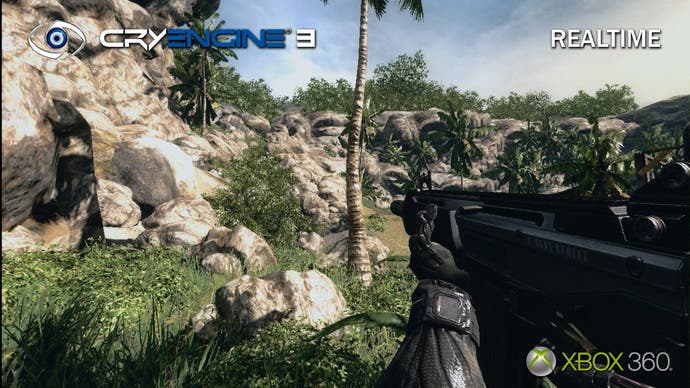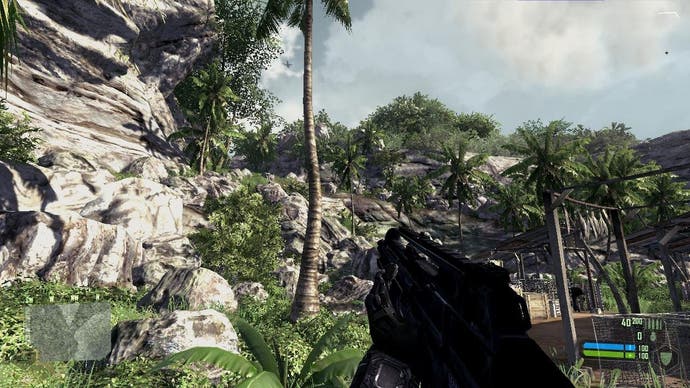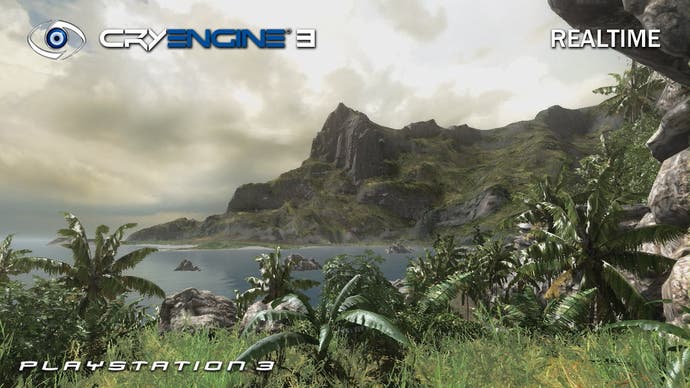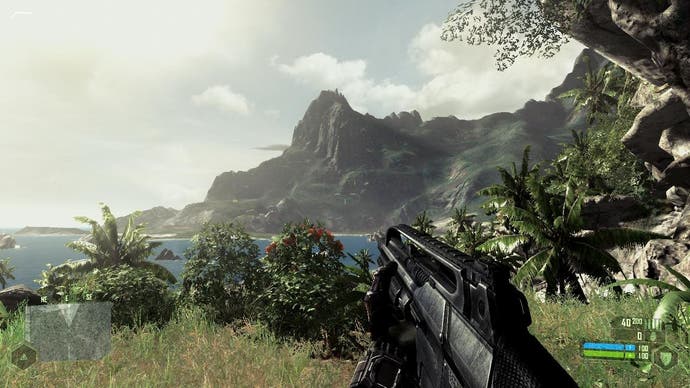Can Consoles Run Crysis?
Digital Foundry lays out the ultimate test for CryEngine 3.
So, let's check out the custom Nebula PC mod against CryTek's CE3 console demo with a selection of reference shots to show just how close he managed to get.






The major differences between the replica and the console CryEngine3 are twofold. Firstly, CryTek has created a custom skybox which is not seen in the original game and significantly alters the overall lighting scheme. Secondly, it's worth bearing in mind that matching exact time of day wasn't possible, and this has potentially the most dramatic impact of all on the closeness of our replica shots.
So, Crysis on console. How did CryTek manage it? With the replica model complete based on all aspects of the game seen within CryTek's tech demos, we have a very good idea of the tweaks, changes and additions made within the CE3 demos. Our understanding of the engine's capabilities has also had a boost thanks to the extended glimpses of the engine editor in CryTek's various public demos of the tech at work.
Based on what we've seen of the console engine, it's fair to say the developer is replacing a lot of 3D objects and foliage with 2D sprites depending on LOD (level of detail), significantly reducing load. It's also clearly apparent that rendering distances and LOD-switching have been tweaked considerably for console - transitions between those detail levels are more apparent than they are on the original PC version. On a related matter, it's also curious that the mountainsides have no rocks or rubble as seen in Crysis - at this point, we don't know whether this is an engine consideration (i.e. reducing the view distance to way below medium setting) or simply that the assets aren't in this rendition of the map being used for the CE3 demo.
Texture-handling overall appears to be very roughly in line with the PC game's medium setting, but with more detail. Crysis on PC has a lower resolution texture pack for this setting, but examination of the console version seems to indicate that these lower-res assets aren't being used. Texture streaming is disabled at this level on the PC version, but the chances are that it is included as standard in CE3, which would explain the bonus detail we see. This element is crucial for the console version of CryEngine3 - the ability to stream in new visual assets from hard disk or the optical drive is essential in matching the prowess of competing technologies such as Unreal Engine 3.
Water detailing looks like something of a mixed bag - anything from sub-medium to high quality in PC terms. The update rate of the water seems to be significantly lower than the medium setting, and the various crabs and fish seen in the PC build are also absent. The water effect itself seems to have the 3D waves of the high setting, while reflection quality is on par with Crysis's medium level.
Shadow levels are always something of jumble on console, and the effect throughout the CE3 demo is a touch disappointing. The update on the shadowmaps is very slow, worse than medium in Crysis, but obviously better than the low setting on the PC version where there are no shadows at all. In later CE3 demos, the update rate has been increased, suggesting either a performance boost during development, or else that the levels were tweaked for the later demos. In LOD terms, areas of terrain where there are no shadows at all appears to be in line, once again, with the medium setting in PC Crysis, as are the shadowmap cascade transitions. CryEngine3 features screen-space ambient occlusion (SSAO) as standard, and explosions are generating lightsources, so general shading is definitely up there with the high setting on the PC game.
Finally, post-processing is again a rather intriguing hybrid of elements from the very lowest and very highest settings seen in the original Crysis. There's no depth-of-field at all that we could discern, and no anti-aliasing either. However, the colour-grading, sun-shafts and god-rays all hail from the very opposite end of the quality spectrum. Motion blur is a key aspect in Crysis's image quality and this seems to be equivalent to the medium setting in the PC version. However, camera motion blur isn't used and there's no sense that the ultra-realistic per-object variation is being deployed here. In this sense, CE3 doesn't appear to be matching similar effects seen in Killzone 2, for example.
Overall, it's clear that CryTek has had plenty of fun tweaking the Crysis Island level within its spiffy new editor. There are changes that are not wholly attributable to the new engine: geometry and object placement are sometimes different, for starters. However, what is perhaps most exciting from what we've seen of the tech and its editor is that all the PC effects of CE2 are there, and more: it's just a case of how many can be deployed on console while maintaining frame-rate.
CryTek's technical showcase on console is an intriguing mix of sub-medium-level settings for some elements, all the way up to "very high" in others. It's clearly had a lot of time and effort put in to run the demo to a graphically pleasing degree while simultaneously maintaining performance good enough for the purposes of the demo. But just how well does this Crysis taster actually run? It certainly looks good enough to pass for a decent console rendition of this most technically demanding of games, but how playable would it be?
